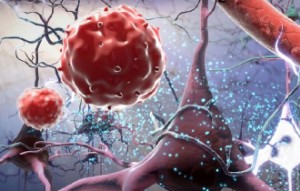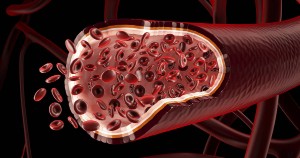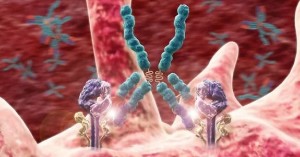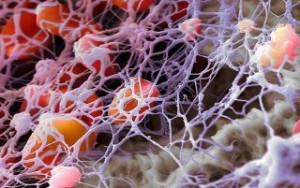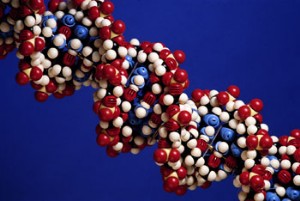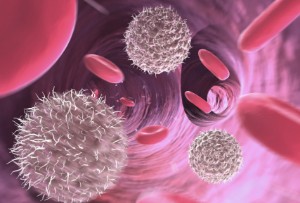How to reduce triglyceride levels in the blood – 5 nutrition rules and other methods
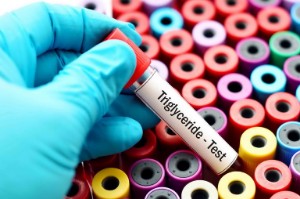 Triglycerides are derived elements from glycerol, which, in turn, is synthesized in the body from fats. That is, the relationship between fats and triglycerides is direct. And an excess of the latter in the body provokes the development of various diseases of the cardiovascular system, as the risk of plaque formation and blood clots in blood vessels increases.
Triglycerides are derived elements from glycerol, which, in turn, is synthesized in the body from fats. That is, the relationship between fats and triglycerides is direct. And an excess of the latter in the body provokes the development of various diseases of the cardiovascular system, as the risk of plaque formation and blood clots in blood vessels increases.
It should also be noted that the growth of triglycerides in the blood is necessarily complemented by an increase in the concentration of low-density cholesterol, which also affects the formation of plaques (and that is why such cholesterol is called "harmful").
According to research, the triglyceride content in the blood is strongly correlated with the daily diet.
In this article, we will look at how to reduce their number. How can diet and traditional methods of treatment help in this? And what level of triglycerides can be considered the "norm"?
Content
Acceptable rate
Triglycerides are the components of which the body receives the main energy . That's why you can't do without them.
 But the modern man's diet is designed in such a way that he gets a lot more fats and carbohydrates than he needs. This is complemented by the trend of widespread decrease in physical activity.
But the modern man's diet is designed in such a way that he gets a lot more fats and carbohydrates than he needs. This is complemented by the trend of widespread decrease in physical activity.
What happens in the end? Approximately 60% of the adult population aged 25 years and older have elevated triglyceride levels in their blood. Accordingly, already at this age, there is an excessive load on cardiovascular system , but the consequences make themselves felt after 40-50 years.
What level of triglycerides is considered normal? The following indicators (in mmol/l) are relatively "safe":
- For children under 15 years of age: 0.36 – 1.41 for boys, 0.42 – 1.48 for girls;
- From 15 to 25 years old: for boys 0.5 – 2.17, for girls 0.41 – 1.48;
- From 25 to 60 years old: for men 0.65 – 3.23, for women 0.62 – 2.96;
- After the age of 60: for men 0.65 – 3.29, for women 0.68 – 2.96.
Why can their level be increased?
Short–term deviations from the norm by about 0.2 - 0.3 mmol/l is not something critical. This most often occurs after a heavy snack with a lot of fatty foods.
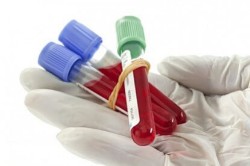 But within 1-2 hours, the body independently normalizes the balance of tringlycerides in the blood, activating the processes of their cleavage to energy.
But within 1-2 hours, the body independently normalizes the balance of tringlycerides in the blood, activating the processes of their cleavage to energy.
Why are triglycerides rising? There may be many reasons, but the most common ones are:
- Non-compliance with a healthy diet (abuse of fatty, sweet, and alcohol);
- Problems with the endocrine system (imbalance of hormones responsible for regulating metabolism);
- Taking certain medications (directly affecting the work of the hormonal system).
5 Nutrition Rules for Lowering them
It is with the revision of the regular diet that the normalization of triglyceride levels should begin. If possible, periodic physical activity should also be included. Moreover, it is not necessary to play sports – even walking allows you to get rid of excess triglycerides, transforming them into energy (which is spent on any movement).
1. Giving up fat
It is necessary not to completely abandon, but to minimize the use of such products. Especially "harmful" are:

- Fried pork and beef;
- Margarine;
- Butter and ghee;
- Products with a high content of trans fats (most often they are added to the same margarine, cheap sweets where palm fat is available).
It is also recommended to lower the amount of chicken eggs (or at least yolks) consumed, since they contain a considerable amount of cholesterol. In combination with triglycerides, this leads to the formation of cholesterol plaques.
2. Exclusion of sweets from the diet
 The body also receives energy from carbohydrates. But if at the end of the 19th century, on average, only 6-7 kilograms of sugar per person per year (in Europe), today it is about 130 kg, which is explained by the cheaper production technology.
The body also receives energy from carbohydrates. But if at the end of the 19th century, on average, only 6-7 kilograms of sugar per person per year (in Europe), today it is about 130 kg, which is explained by the cheaper production technology.
The real need is at the level of the same 6-7 kilograms of sugar per year. What happens to the "extra" carbohydrates in the body? They are also through a whole chain of biochemical reactions, they are transformed into triglycerides . And that's why you should give up sweets.
Nutritionists recommend "allocating" only 100-150 kcal for sweets daily. And this is only 50 grams of condensed milk or 35 grams dark chocolate (dairy – and even less). And it is highly desirable that these be "light" desserts, for example, based on cottage cheese or fruits. Chocolate bars, pastries, ice cream and so on will be less useful.
3. Complete abstinence from alcohol
 How are alcohol and blood triglyceride levels related? He disrupts functioning
those body systems that are responsible for the breakdown of triglycerides and the release of energy.
How are alcohol and blood triglyceride levels related? He disrupts functioning
those body systems that are responsible for the breakdown of triglycerides and the release of energy.
Some of these functions, for example, are taken over by the liver. And ethyl alcohol, which is the basis of all alcoholic beverages, literally destroys liver cells.
4. The inclusion of foods rich in omega-3 in the diet
 Omega-3 and similar fatty acids belong to "healthy" fats – they are easily broken down, absorbed, stimulate intercellular metabolic processes, as well as clean the vessels
, reducing the total cholesterol level in the blood.
Omega-3 and similar fatty acids belong to "healthy" fats – they are easily broken down, absorbed, stimulate intercellular metabolic processes, as well as clean the vessels
, reducing the total cholesterol level in the blood.
Doctors claim that omega-3 fatty acid deficiency is observed in about 90% of patients with cardiovascular diseases.
Which foods contain the most omega-3 unsaturated fatty acids? Nutritionists recommend including in the diet:
- Fatty fish varieties (mackerel, tuna, trout, salmon);
- Black and red caviar;
- Legumes, nuts;
- Leafy vegetables (including seasonings);
- Flaxseed oil and flaxseed.
You can also buy fish oil in pharmacies. It is taken as a dietary supplement, it contains about 50% of omega-3 and omega-9 unsaturated fatty acids.
5. Replacing meat products with vegetable protein
Such dietary changes dramatically reduce the level of triglycerides and low-density cholesterol in the blood. And from meat products, it is better to give preference to chicken, and, moreover, to breast (ideally, boiled or baked with the addition of linseed oil).
Which vegetables contain the most protein? Preference should be given to:
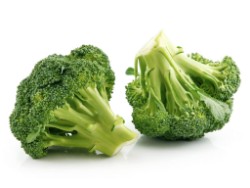
- Legumes;
- Broccoli;
- Lentils;
- Pumpkin seeds;
- Asparagus;
- Spinach;
- Brussels sprouts.
In most cases, these products can provide up to 80% of the body's protein needs. The rest can be provided with the same chicken breast or some desserts.
Folk Remedies — Top 4
In folk medicine, there are at least 10 effective means to normalize the balance of triglycerides in the blood. The most effective among them are:
1. Decoction of bean pods
Will help speed up metabolism, as well as saturate the body with minerals, potassium, zinc. It is prepared as follows:

- Soak 100 grams of dried bean pods overnight (only the boxes, without the bean seeds themselves);
- In the morning – drain the water, pour in a new one and bring to a boil over low heat (1 liter of water per 100 grams of pods);
- After 20 minutes – remove from heat, let cool to room temperature;
- Strain through 2-3 layers of gauze.
Take 50 milliliters 3 times a day 30 minutes after eating. The course of treatment is 2 months. This tool will also help you quickly get rid of 2-3 extra pounds.
2. A mixture of garlic, lemon and horseradish root
This is extremely Effective vascular cleaner
. It is especially noticeable for the rapidly decreasing level of low-density cholesterol. It is prepared as follows:

- Mix 1 head of garlic, 25 grams of grated horseradish root, 2 medium lemons (together with the peel);
- Chop everything thoroughly with a meat grinder, blender or food processor;
- Insist overnight in a dark, cool place.
Take 2 times a day for 10 grams (1 teaspoon) during meals. The same remedy will help to comprehensively strengthen the immune system of a weakened body.
3. Infusion of crushed flax seeds
 For cooking infusion of flax seeds
it is the fresh flax seeds that are taken. They are pre–minced through a meat grinder, it is better to grind them with a blender.
For cooking infusion of flax seeds
it is the fresh flax seeds that are taken. They are pre–minced through a meat grinder, it is better to grind them with a blender.
About 30 grams of the resulting gruel is poured overnight with a glass of boiling water. In the morning, squeeze and drink on an empty stomach (20-30 minutes before the scheduled meal).
Drink 1 time a day, the course is up to 30 days, then a break of 2 weeks.
4. Linden Flower Tea
 A delicious, simple and effective remedy for quickly lowering the concentration of triglycerides in the blood. Tea is made from flowers collected at the very beginning of the tree's flowering.
A delicious, simple and effective remedy for quickly lowering the concentration of triglycerides in the blood. Tea is made from flowers collected at the very beginning of the tree's flowering.
Dry them in a dark place with good ventilation. To make tea, you will need only 0.5 – 1 teaspoon of dried flowers (for 1 cup of the finished drink).
You can drink up to 2 times a day, honey and sugar are added to taste. Such a remedy can be given even to small children (from the age of 3, according to the recommendations of doctors).
5 tips for lifestyle changes
As mentioned above, triglyceride levels are directly affected by physical activity. What lifestyle tips will help reduce the risk of developing cardiovascular diseases in the future?
1. Regular physical activity
 Are necessary to stimulate the breakdown of triglycerides to energy. Best of all walk daily for at least 1.5 – 2 hours.
Are necessary to stimulate the breakdown of triglycerides to energy. Best of all walk daily for at least 1.5 – 2 hours.
As a last resort, visit the fitness room 3-4 times a week, but at the same time exercise yourself at home in the morning and evening (for 10-15 minutes).
This will be enough to lower triglycerides by 0.5 – 0.8 mmol/l, which in most cases is necessary to achieve.
2. Eat often, in small portions
 Nutritionists and gastroenterologists knowingly recommend eating often, but in small portions – this greatly simplifies the work for the gastrointestinal tract, helping to break down fats more "qualitatively".
Nutritionists and gastroenterologists knowingly recommend eating often, but in small portions – this greatly simplifies the work for the gastrointestinal tract, helping to break down fats more "qualitatively".
How many times a day do you need to eat? The best option is 5-6 times. With active physical activity (for athletes, for example) – up to 8-9 times a day.
3. Avoid nighttime "snacks"
 One of the most harmful factors leading to an abrupt increase in triglycerides in the blood.
One of the most harmful factors leading to an abrupt increase in triglycerides in the blood.
Experts recommend 2 to 3 hours before bedtime, completely stop eating and any other drinks, except water.
It will also have a positive effect on the work of the gastrointestinal tract, prevent the oxidation of liver cells.
4. Complete smoking cessation
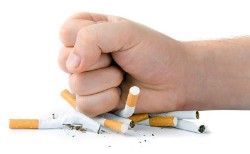 Nicotine has no direct effect on triglyceride levels, but tobacco smoke can increase the risk of developing cardiovascular diseases.
Nicotine has no direct effect on triglyceride levels, but tobacco smoke can increase the risk of developing cardiovascular diseases.
That is, it complements the effect of increased fat levels in the circulatory system. In addition, it reduces the concentration of oxygen in the blood, which also exacerbates the destructive effect on the heart.
Medicinal methods
If a patient is found to have high triglyceride levels, then doctors, first of all, recommend changing their lifestyle, as well as optimizing their diet. But if these recommendations do not give the desired effect or the patient for some reason cannot comply with them, then they are prescribed:
1. Physical therapy
 It's the same physical activity, but the set of exercises is made individually for the patient
(to reduce the load on the cardiovascular system).
It's the same physical activity, but the set of exercises is made individually for the patient
(to reduce the load on the cardiovascular system).
The observed diet is also taken into account. As a rule, the first classes are conducted with a specialist, then the patient himself controls the performance of physical therapy.
2. Nicotinic acid preparations
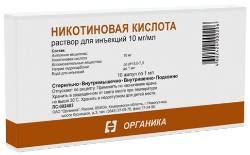 Will help reduce both triglycerides and cholesterol levels, since such drugs partially block the process of lipolysis – the release of fatty molecules from cells into the blood.
Will help reduce both triglycerides and cholesterol levels, since such drugs partially block the process of lipolysis – the release of fatty molecules from cells into the blood.
However, long–term use of such drugs is not recommended - it can provoke obesity.
3. Fibrate preparations
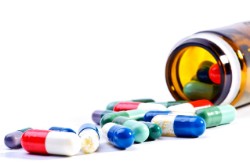 Such drugs "interfere" with the liver and inhibit the synthesis of fats in the body. The most common pharmacological agents in this category are Atromide, Gavilan.
Such drugs "interfere" with the liver and inhibit the synthesis of fats in the body. The most common pharmacological agents in this category are Atromide, Gavilan.
Taking them for a long time is not recommended, as this can provoke the formation of stones in the liver.
4. Drugs that affect the secretion of bile acid, enzymes
With their help, the work of the gastrointestinal tract is adjusted to achieve a reduction in the amount of fat obtained from food. The most common drug in this category is Ranitidine, used in the treatment of gastric or duodenal ulcers. Admission is conducted only in short courses.
Interesting video
And now we invite you to familiarize yourself with the video:
;
Conclusion
In total, the main danger of high triglycerides is a negative effect on the cardiovascular system, an increased risk of heart failure, angina pectoris, tachycardia, hypertension, atherosclerosis.
The primary factor in increasing the level of fats in the body is non–compliance with a healthy lifestyle, lack of physical activity, and abuse of junk food. And it is with the correction of these factors that treatment should begin.
